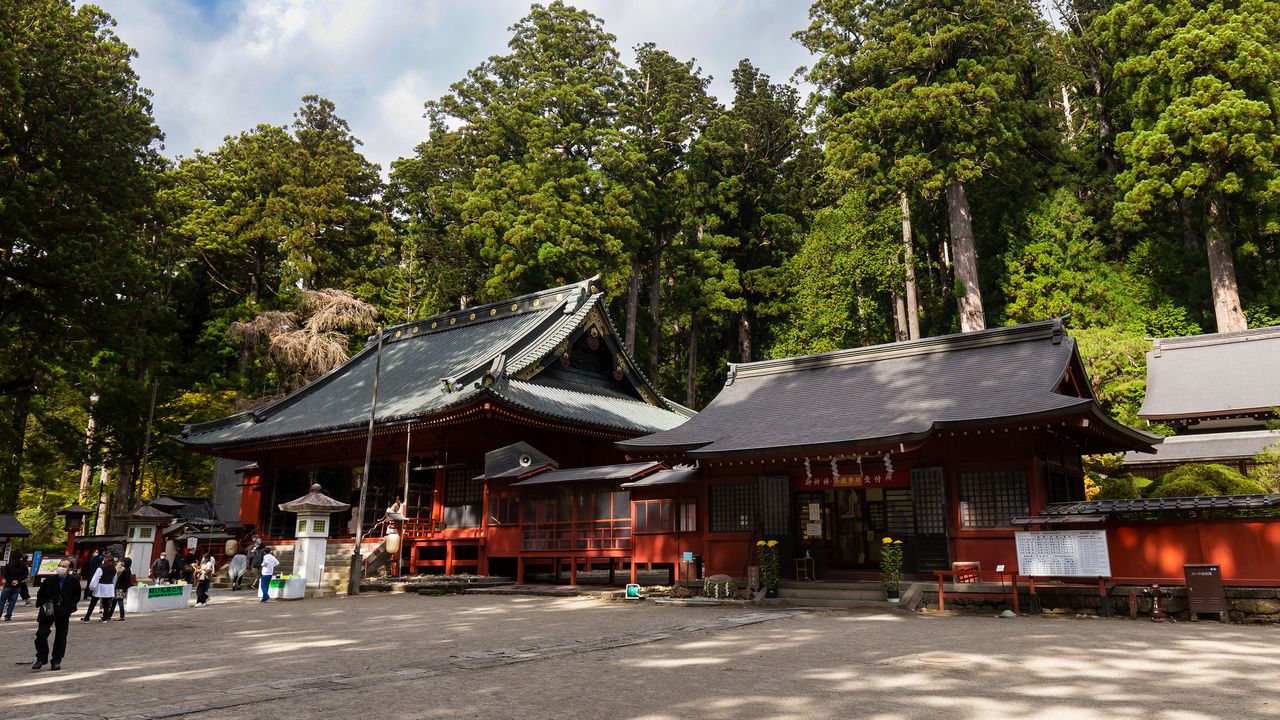
Futarasan Shrine: A World Heritage Destination in Nikkō, Tochigi
Guideto Japan
Travel History- English
- 日本語
- 简体字
- 繁體字
- Français
- Español
- العربية
- Русский
Centuries of Tumultuous History
Futarasan Shrine in Nikkō, Tochigi Prefecture, has as its main object of veneration the 2,486-meter peak Mount Nantai. Futarasan is indeed an older name for the mountain, said to come from Fudarakusen, meaning “a mountain home to the bodhisattva Kannon,” or Avalokitesvara. The characters 二荒 (futara) in the name can also be read as nikō, providing the root of the place name Nikkō.
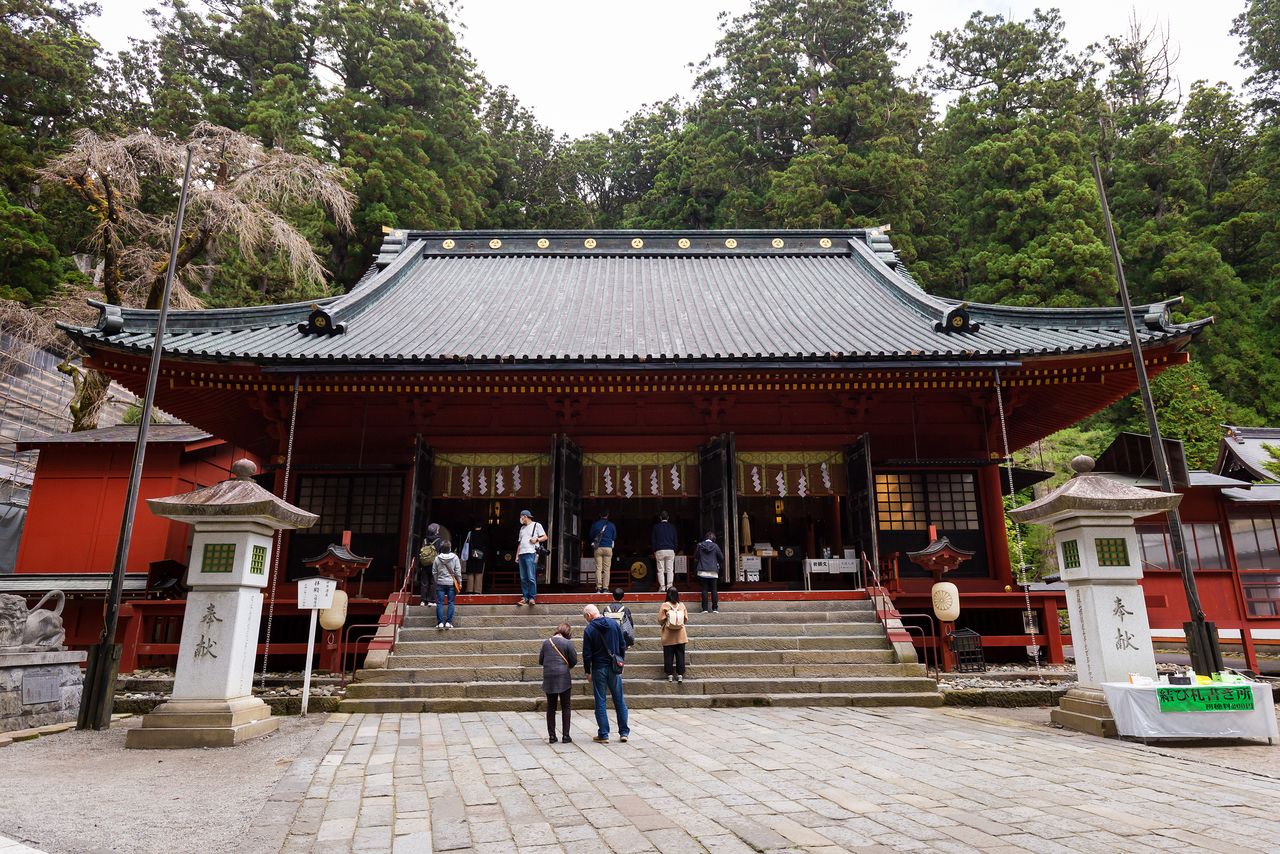
The main worship hall of Futarasan Shrine is designated an important national cultural property and is part of the World Heritage inscription.
Nikkō was founded as a religious site by the monk Shōdō (735–817). In 766 he forded the Daiya River, which flows down from the nearly 100-meter-high Kegon Falls, and built a small hermitage, naming it Shiunryūji, a temple that is today called Shihonryūji. In the following year, he constructed a shrine dedicated to the mountain Futarasan. Over the years this would take the form of the Betsugū Hongū-jinja that is now part of the Futarasan complex. Shōdō remained in the area, in 782 making his first ascent of Futarasan and building yet more shrines: Okunomiya on the peak itself and Chūgūshi on the shore of Lake Chūzenji.
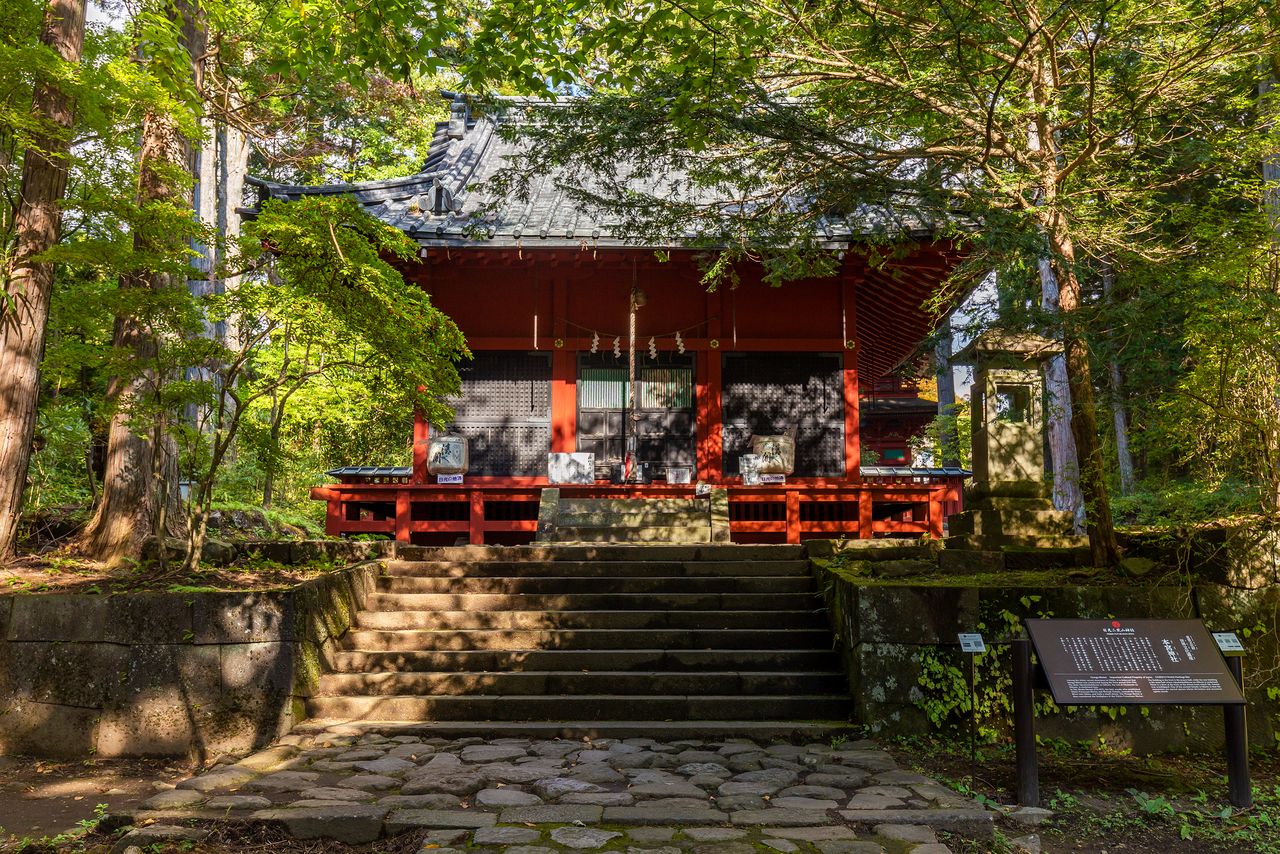
The Betsugū Hongū-jinja, originally Shōdō’s shrine to the mountain, formed the core of the World Heritage Futarasan complex.
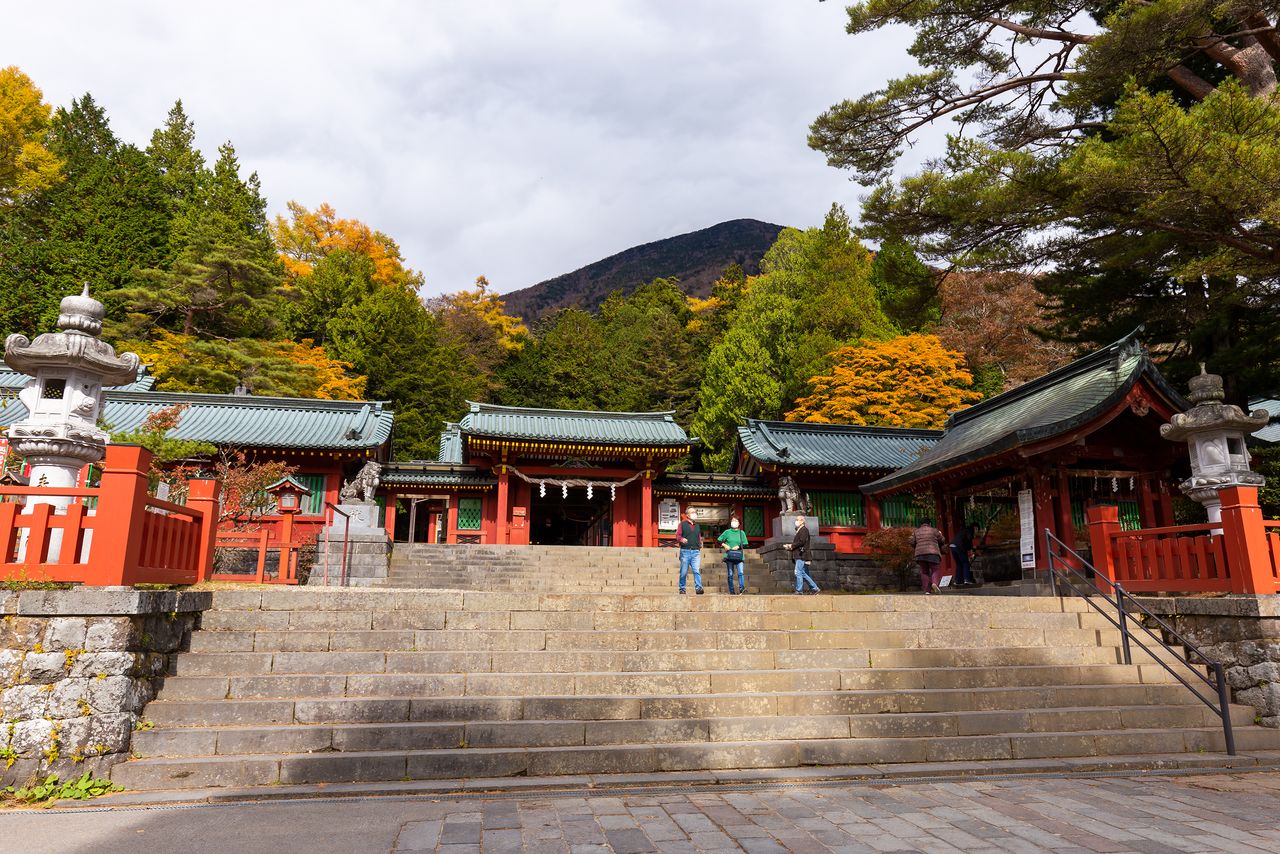
The Chugūshi shrine stands on the shore of Lake Chūzenji, with the peak of Nantai visible behind its Karamon gate.
Over the centuries that followed Nikkō gained a name among ascetics who viewed its mountains as sites for spiritual training and as presences to venerate in their own right. In the Kamakura period (1185–1333), the area flourished under the protection and sponsorship of the military leader Minamoto no Yoritomo (1147–99). With the successful siege of Odawara Castle in 1590 by Toyotomi Hideyoshi its fortunes waned once more, as the local lords, who had allied themselves with the defeated Later Hōjō clan, were stripped of their lands. But a return to glory came with the dawn of the Edo period (1603–1868). The first three heads of the Tokugawa shogunate—Ieyasu, Hidetada, and Iemitsu—were all supportive patrons of the Buddhist monk Tenkai, who became the chief priest of the Nikkō temples; in 1617 Tōshōgū was erected as a memorial to Ieyasu, who had died the year before.
Futarasan Shrine was moved to the west side of the new Tōshōgū, where a magnificent hall was constructed to house it. The entire site was governed thereafter by Kan’eiji, a temple erected by Tenkai in what is now Tokyo’s Ueno district, whose authority as one of the ancestral temples for the Tokugawa clan ensured that Nikkō would thrive for the remainder of the Edo period.
Up through the end of the Edo period, while Buddhism and Shintō were blended in a flexible form of syncretism, the temples and shrines in the area were collectively labeled Nikkōsan. Following the Meiji Restoration of 1868, though, the new government passed a series of laws aimed at separating the native Shintō faith from the Buddhist religion. The Tochigi complex found itself divided into its constituents—Futarasan Shrine, Tōshōgū, and Rinnōji—and the Nikkōsan name was given to the latter Buddhist temple for use as its sangō, or “mountain name,” a practice dating back to the early days of Buddhism in China, when many temples were sited in remote mountainous areas. In 1998 the Japanese government designated the area as historic site under the collective name Nikkōsannai; the following year they were inscribed by UNESCO as “Shrines and Temples of Nikkō” on its World Heritage list.

The two-storied gate leading to Futarasan Shrine, viewed from Tōshōgū.
A Cultural Site with Plenty to Offer
The areas formally classified as part of the Futarasan Shrine precincts cover some 3,400 hectares in all, encompassing the peaks of three mountains (Mount Nantai, Mount Nyohō, and Mount Tarō), along with Kegon Falls and the famed Iroha-zaka series of hairpin turns taking cars up from the lower Nikkō area to Lake Chūzenji. In the central World Heritage area in town at the bottom of the hill, the bridge Shinkyō spans the Daiya River with its famous crimson arch. This, too, is a part of Futarasan Shrine and one of the properties included in the World Heritage designation. When the monk Shōdō first came to the area and found his way blocked by the river’s fierce rapids, two snakes are said to have appeared and formed a bridge for him to cross, a tale giving this span its other name, Jabashi—“the serpent bridge.”
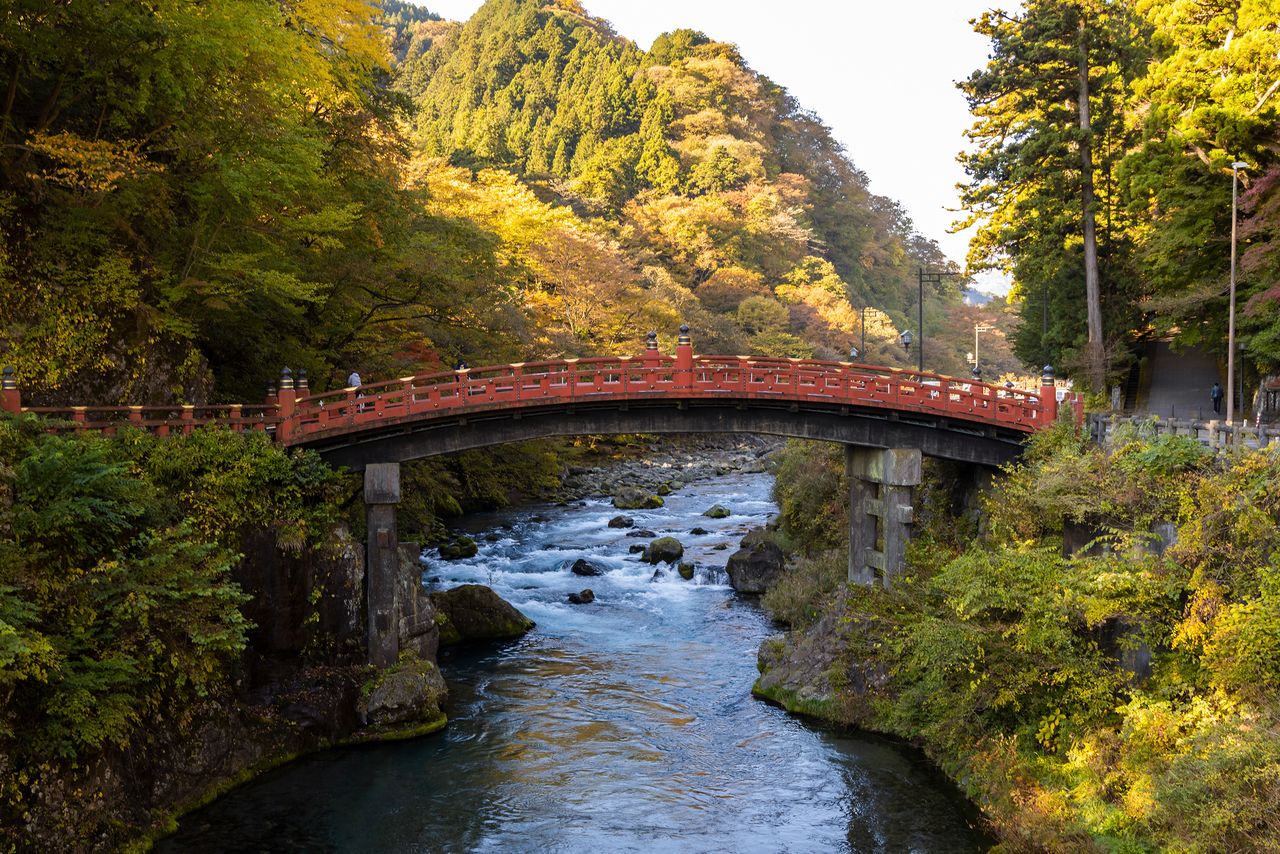
The bridge Shinkyō serves as the “front door” for the Nikkō temples and shrines. Visitors can walk across it for a small fee.
Futarasan Shrine contains 10 structures that have been designated as important national cultural properties, including the haiden and honden halls and the torii gate at the entrance to the central shrine area. The honden main hall, a complex, grand structure built in the yatsumune-zukuri (eight-ridged) style, is concealed behind the haiden worship hall and closed to the public, but a fine view of it is available from the Shin’en garden on the west side. The garden itself is home to a number of sights worth viewing, including the Mitomo Shrine and Hie Shrine, two subshrines in the compound, the Daikokuden hall, and the Bake-tōrō, a large copper lantern dating back to the late thirteenth century.
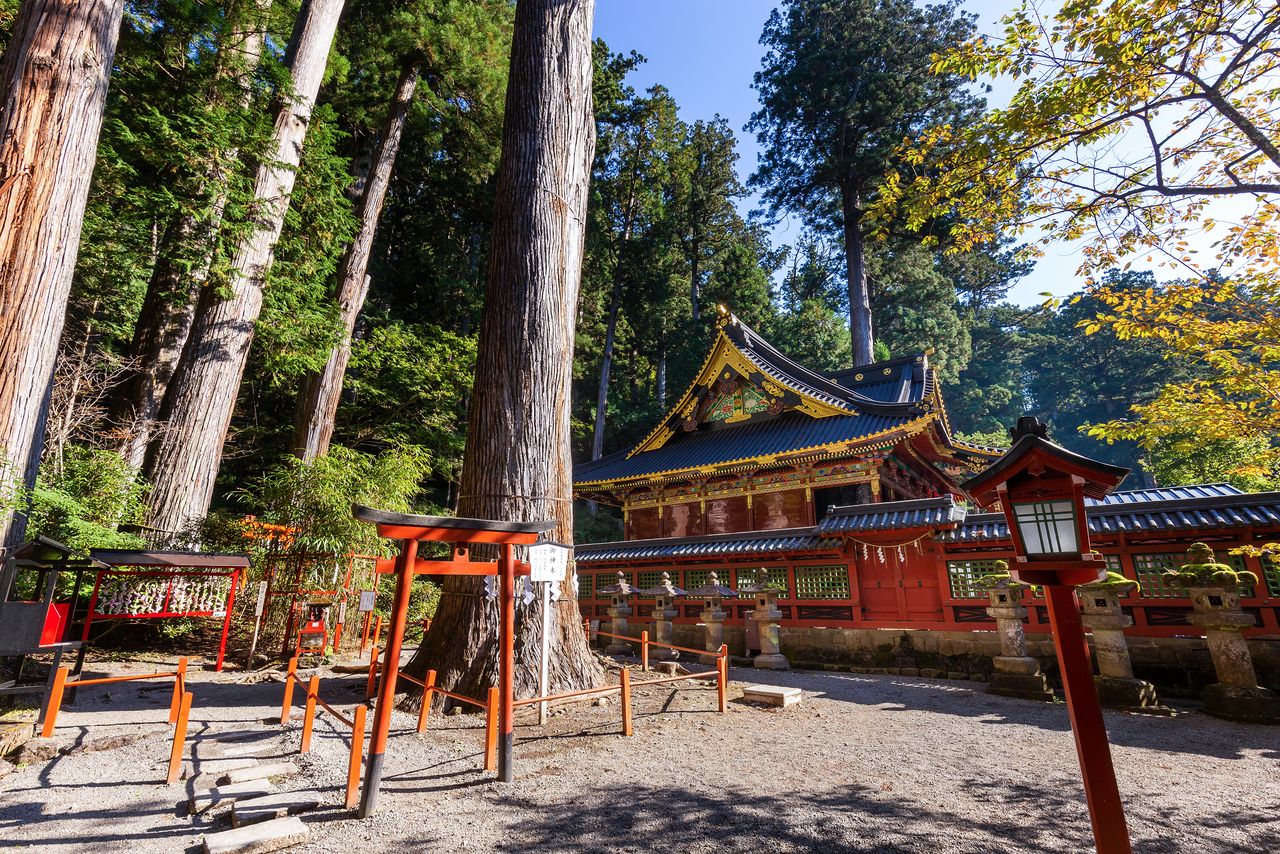
The honden hall viewed from the Shin’en garden. The fence surrounding it is also designated as an important cultural property. The large tree at center is an object of veneration at the shrine, while the bamboo-grass grove at back left is a popular stop for people hoping to meet the perfect partner.
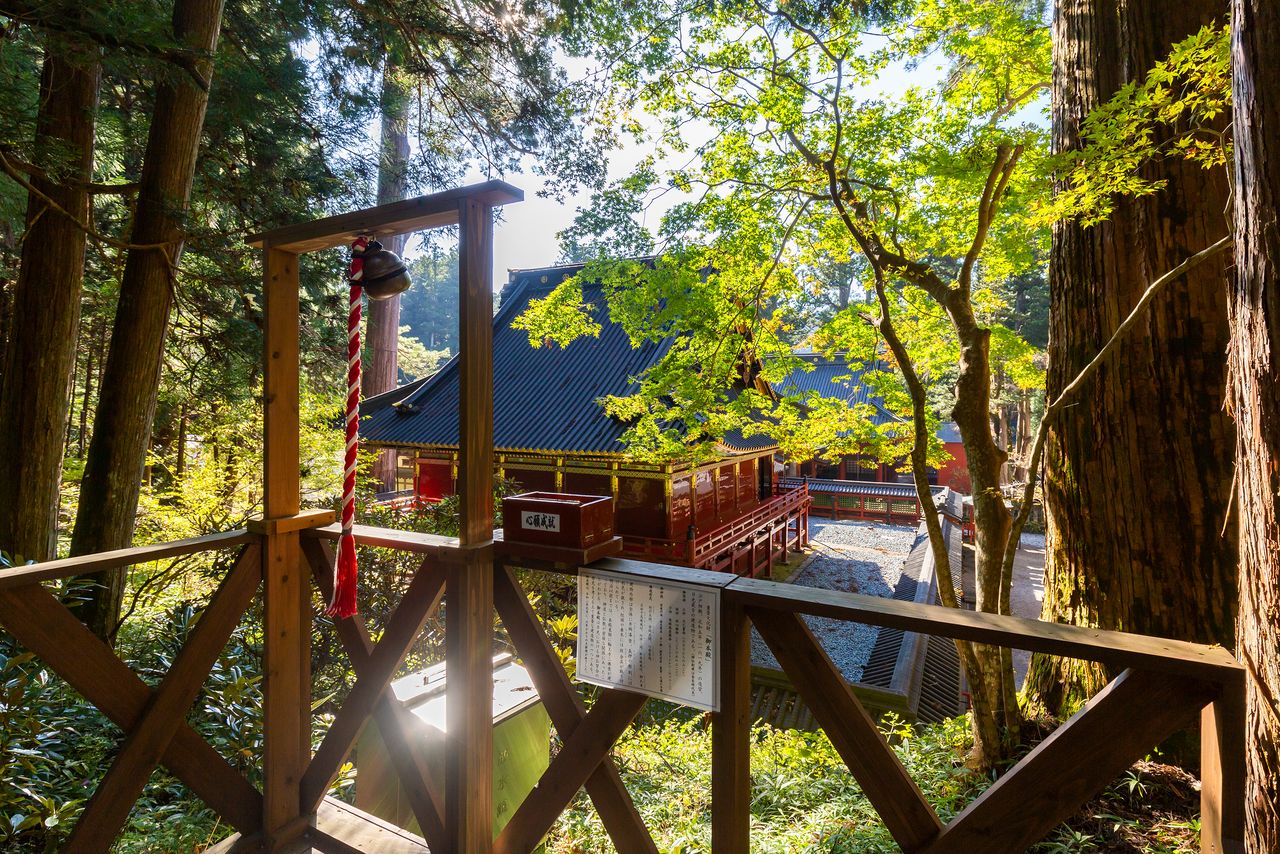
Climb a bit up the hill at the rear of the shrine for a view of the back of the main hall.
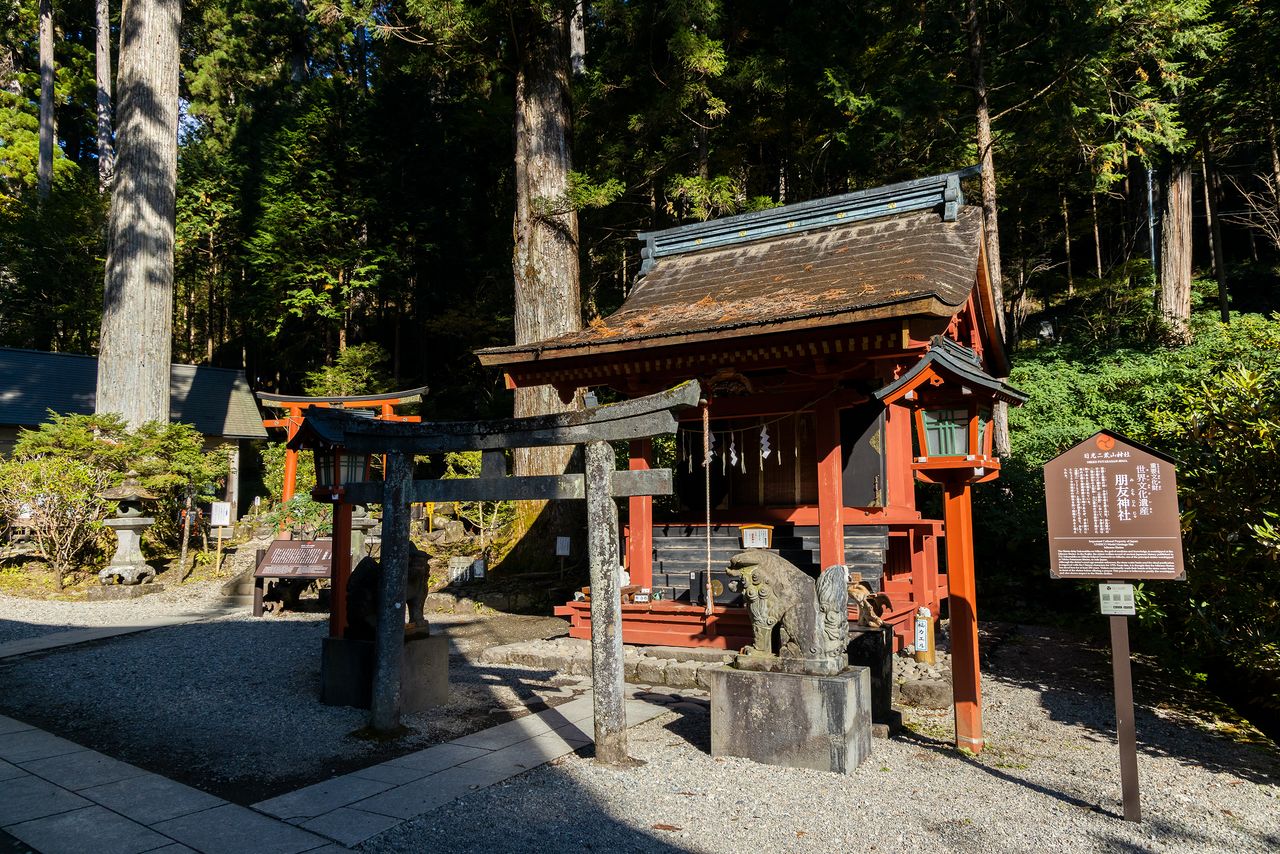
The Mitomo Shrine is dedicated to Sukona Hikona no Mikoto, a deity of wisdom and medicine. The red torii gate at back left marks the entrance to the Futara Reisen, a spring of water held to grant eternal youth.
The shrine as a whole is built for the worship of three kami representing the mountains Nantai, Nyohō, and Tarō: the father, Ōnamuchi no Mikoto, the mother, Tagorihime no Mikoto, and the child, Ajisuki-Tahahikone no Mikoto. The paternal deity bears another name for Ōkuninushi no Mikoto, known as a god watching over romantic and other interpersonal connections. Futarasan Shrine thus built a name for itself over the years as a place to pray for good marriage prospects and domestic happiness. The shrine precinct is filled with “power spots” for visitors seeking luck in love, and it will take some time to pay respects at all of them.
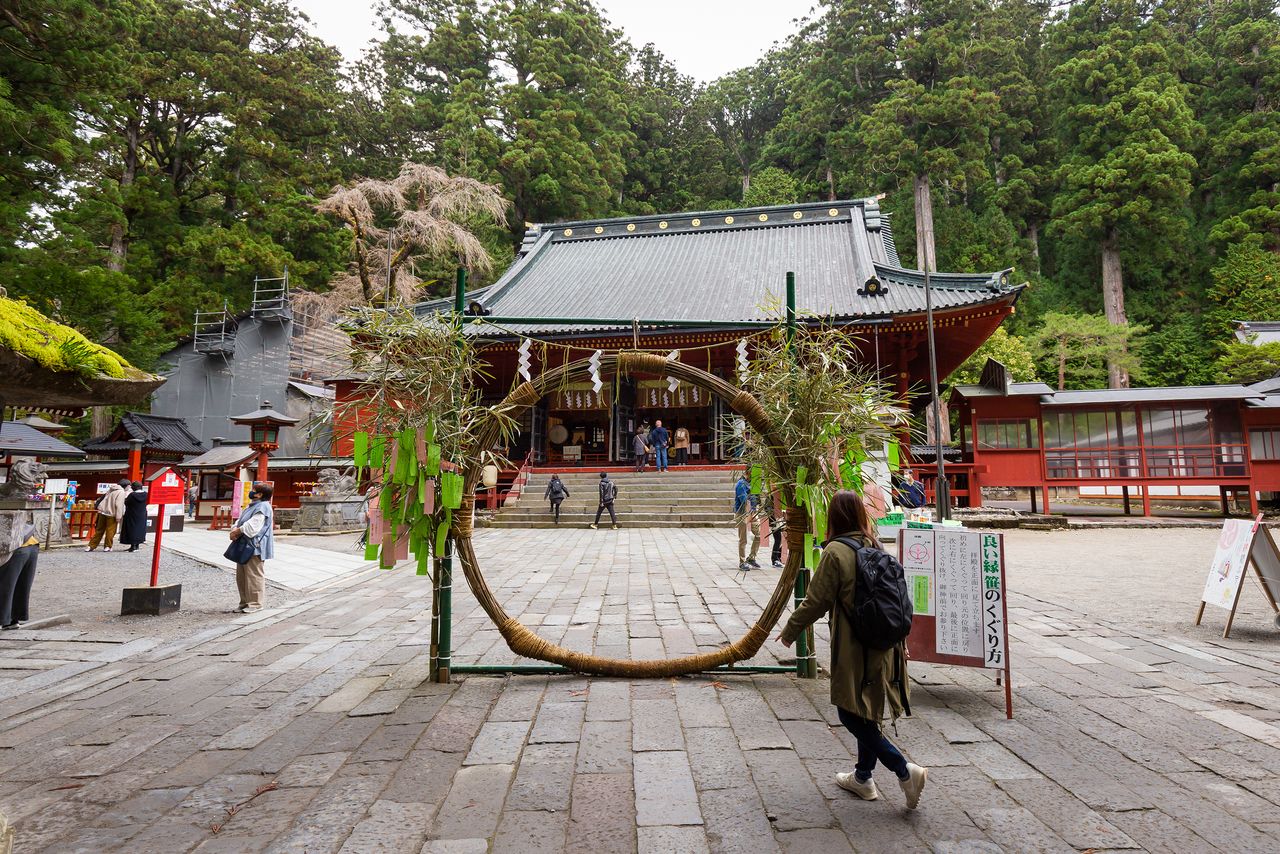
A festival held from mid-September to late November each year features a ring woven from bamboo grass before the worship hall. Visitors pass through the ring three times in all, returning to the front once around the left side and once around the right before heading straight through to pay their respects at the haiden.
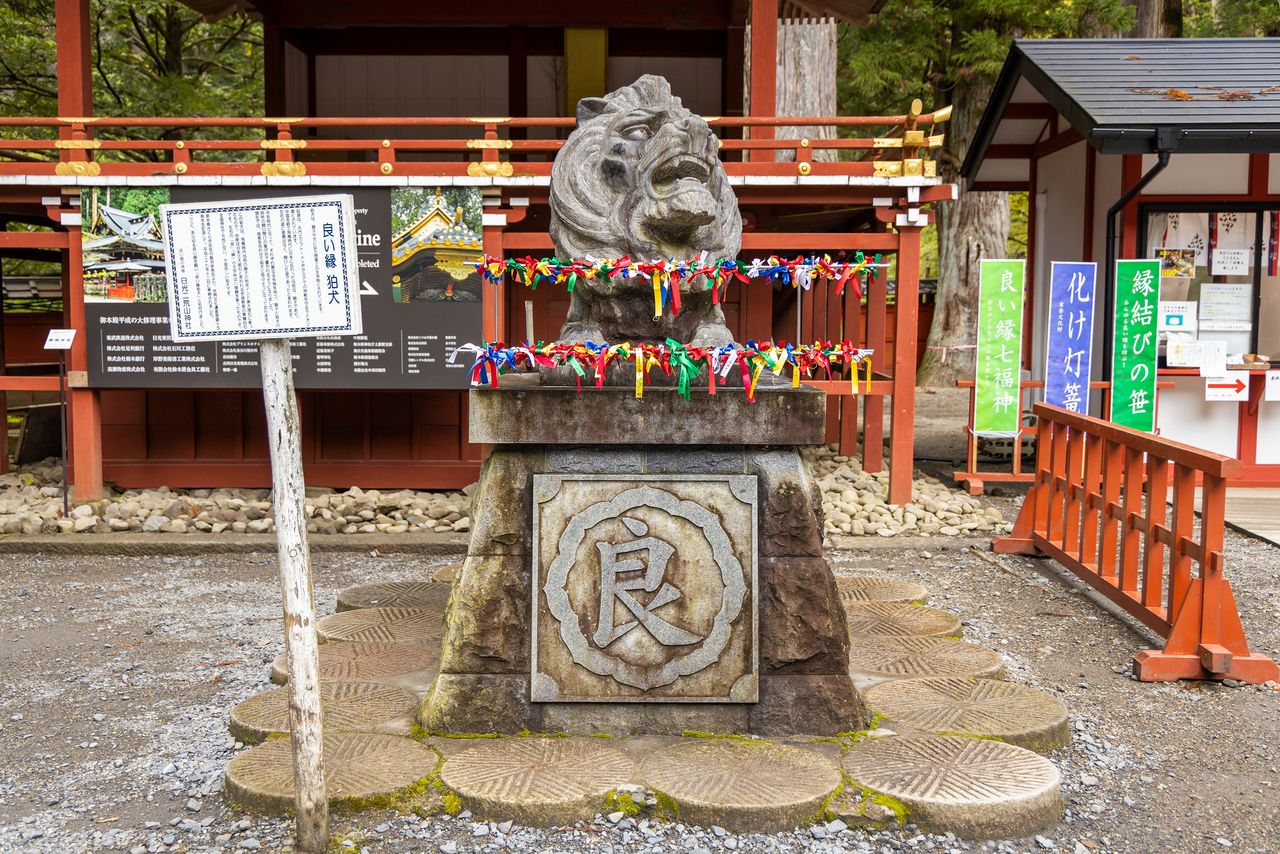
On the left side of the haiden stands the “good relations komainu,” or guardian dog. The character 良 (good) on this side is matched with 縁 (relations/ties) on the other.
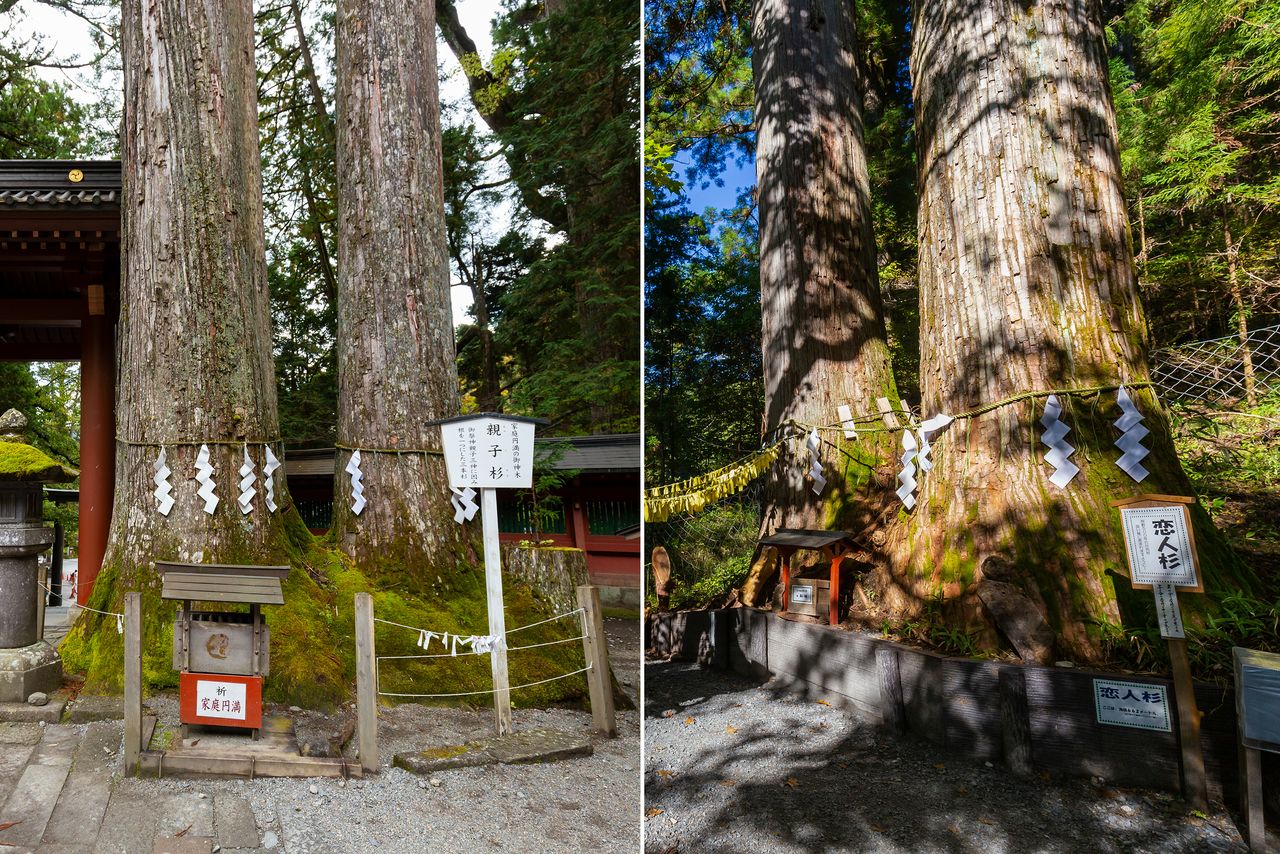
These pairs of cryptomeria trees joined at the roots are held to bring good fortune in romance, relations between married couples, and family life. At left are the Oyako-sugi, “parent and child cedars,” and at right are the Koibito-sugi, the “lovers’ cedars.”
Going Farther for the Full Shrine Experience
Also drawing more traffic in recent years is the Takinoo Shrine, said to have been built by the monk Kōbō Daishi (774–835), also known as Kūkai. This shrine lies high in the woods to the north of the main Futarasan Shrine. It takes around a half-hour of hard uphill walking through the trees to reach it, but many are willing to make the trek to pay their respects at the original grove of bamboo grass held to guarantee luck in love, along with a sacred rock bringing fortune in child-bearing and the three cedars venerated at this secluded shrine.
Visiting the Takinoo Shrine, deep in the woods, is like taking a trip back through time to a spot that retains the flavor of the pre-Edo-period days—a place to remind you of why Nikkō has long been a place of strong spiritual presence. The alluring honden hall and two-storied gate help to make this spot one of the properties constituting the World Heritage inscription.
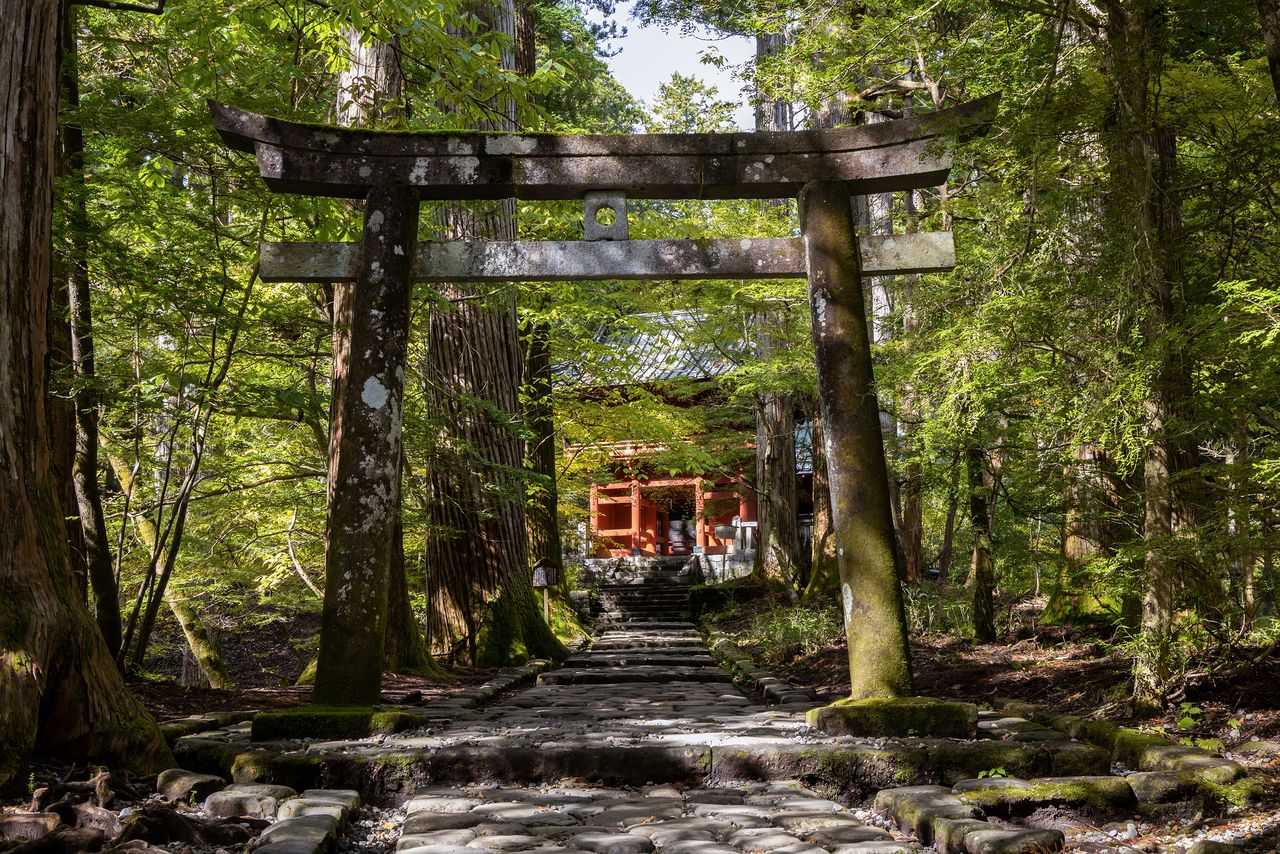
The torii in front of the Takinoo Shrine gate features a small stone target at top center. Throw three rocks at the hole to test your luck; only the truly fortunate will be able to send all three through.
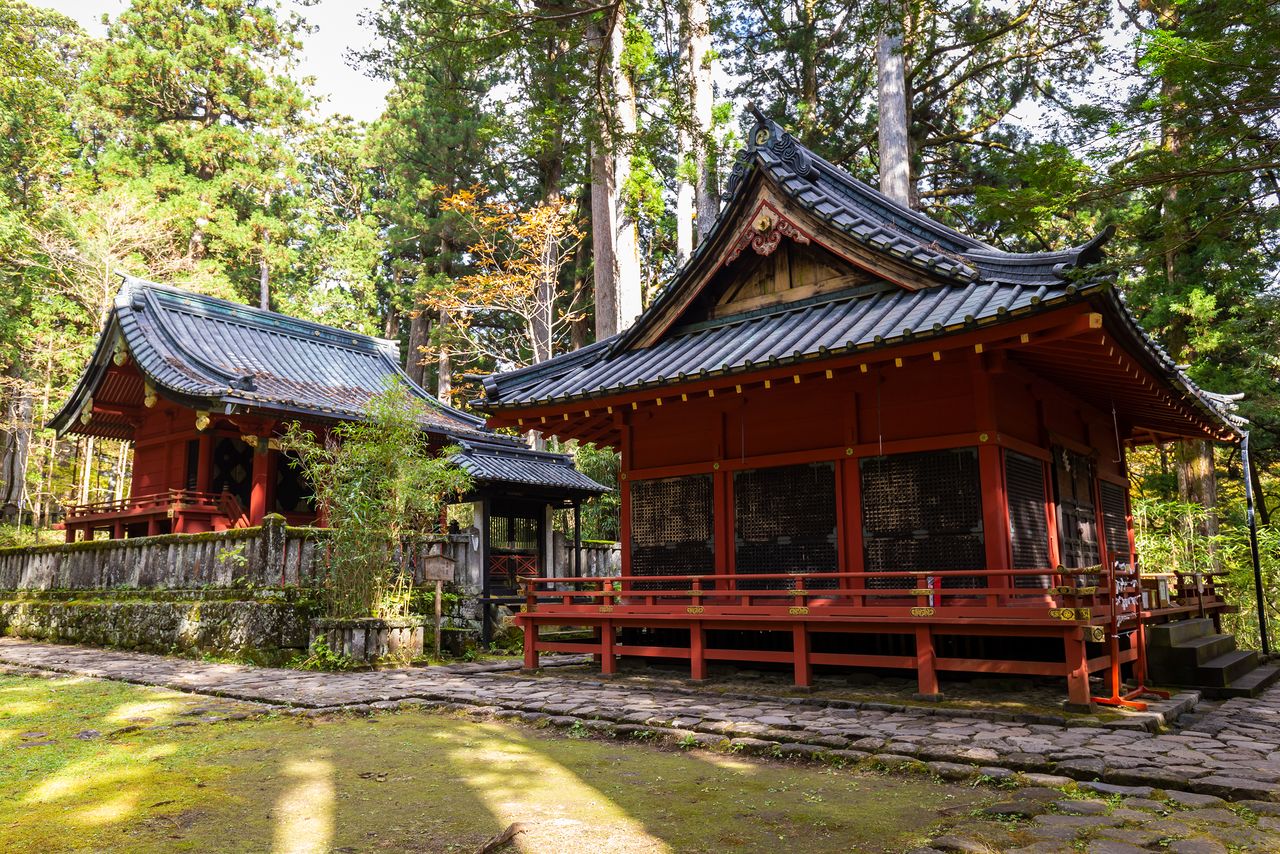
The haiden worship hall (at right) and honden main hall at Takinoo Shrine.
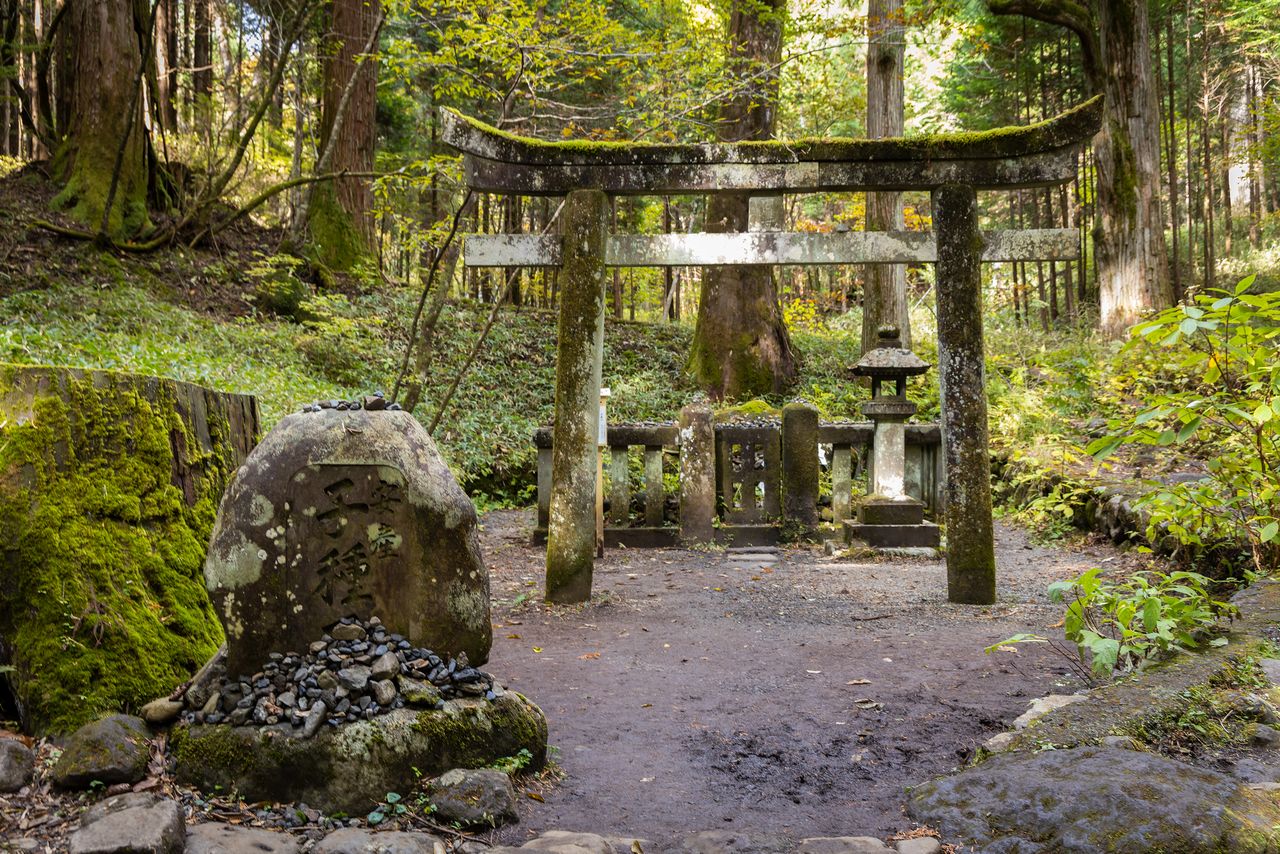
This stone is a spot to pray for fortune in child-bearing.
If you’re heading farther up the mountain to see Lake Chūzenji and Kegon Falls, it’s well worth visiting Chūgūshi Shrine on the shore of the lake. This is not a part of the area inscribed on the UNESCO World Heritage list, but its honden and haiden halls and its torii gate are all designated as important cultural properties by the government of Japan. This shrine is also the sole trailhead leading to the peak of Mount Nantai and the Okunomiya, the shrine at the top. Nantai’s official climbing season is from April 25 to November 11 each year. It takes around four hours to reach the summit, making it a trip to take seriously, with proper hiking gear and supplies.
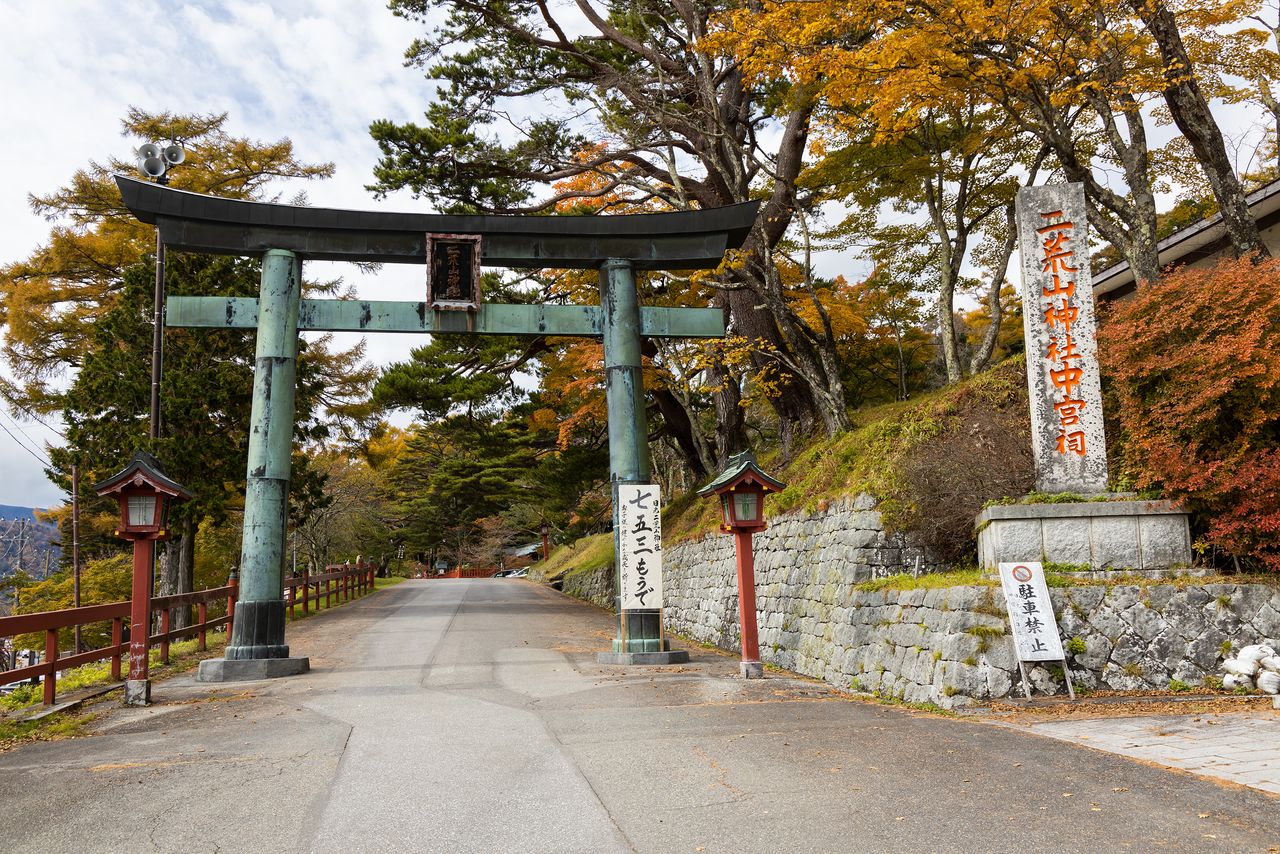
The east torii gate of Chūgūshi Shrine, located just off of National Route 120 on the north shore of Lake Chūzenji.
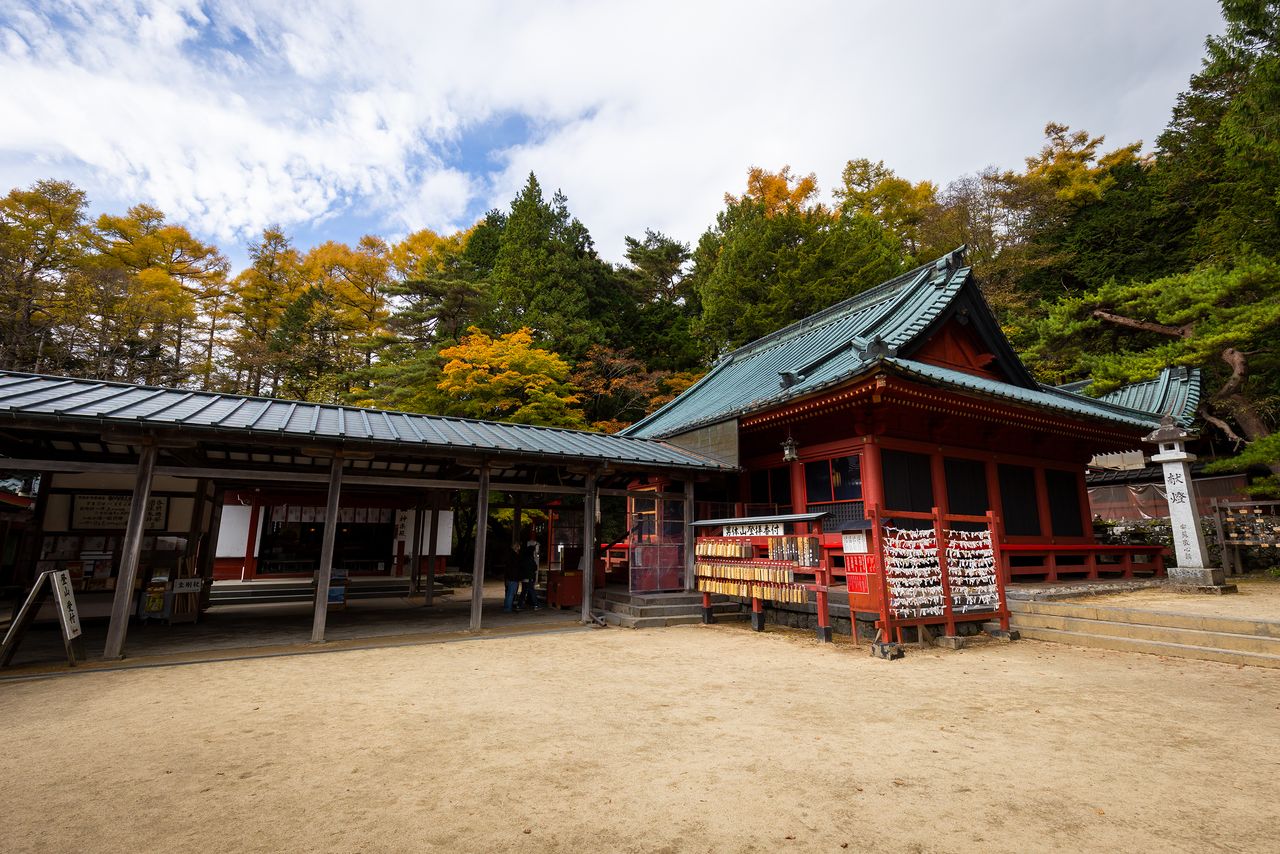
The shrine’s haiden worship hall and a glimpse of the roof of the main honden at back right; both are important cultural properties.
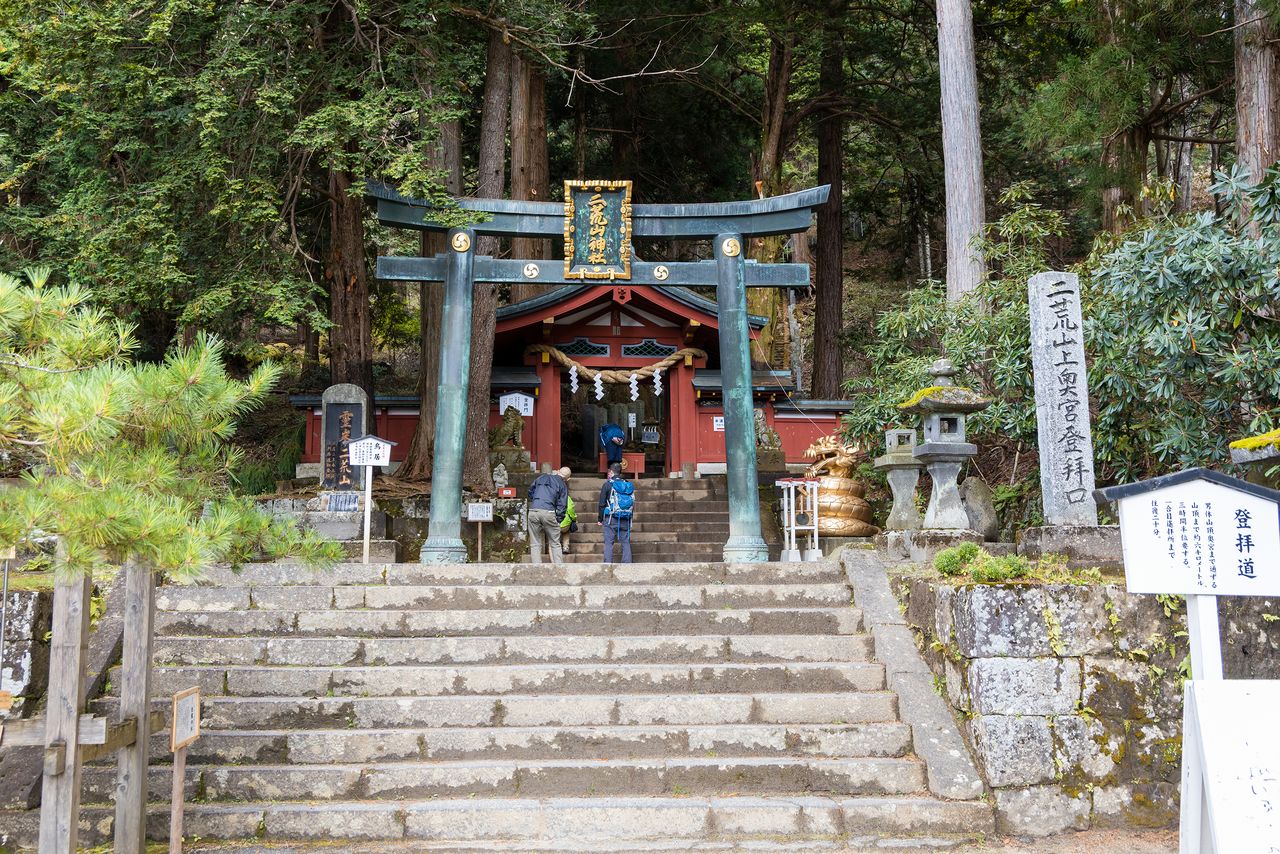
The trailhead leading to the Okunomiya. Climbers, most of whom are well equipped for the mountains, pay a ¥1,000 fee to enter the Mount Nantai trail.
Nikkō Futarasan Shrine
- Address: 2307 Sannai, Nikkō, Tochigi (main shrine); 2484 Chūgūshi, Nikkō, Tochigi (Chūgūshi)
- Open year-round
- Hours: 8:00 am to 5:00 pm (April–October), 8:00 am to 4:00 pm (November–March); entry possible until 30 minutes before closing
- Shin’en garden admission: ¥300
(Originally written in Japanese. Reporting, text, and photos by Nippon.com. Banner photo: The main structures of Nikkō’s Futarasan Shrine.)